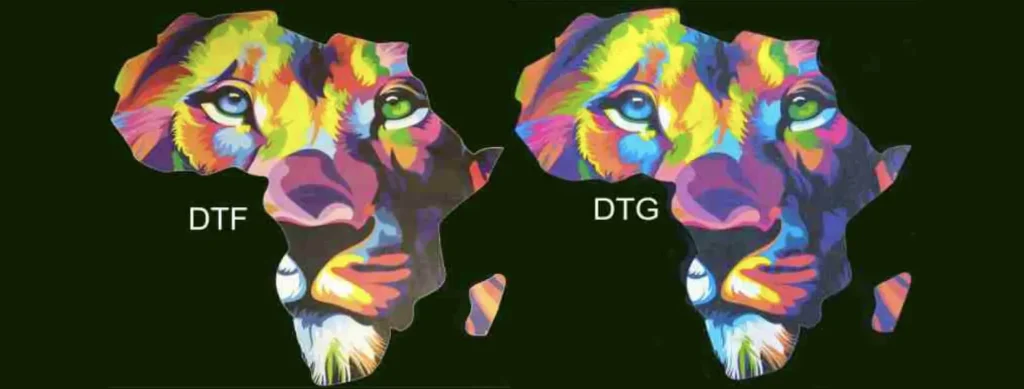When it comes to choosing between DTF vs DTG printing, understanding the unique characteristics and advantages of each method is crucial in the modern printing landscape. DTF printing advantages include its versatility across different fabric types, making it suitable for various materials like cotton and polyester. In contrast, DTG printing benefits from its high-detail capabilities, ideal for intricate designs primarily on cotton fabrics. As businesses and individuals seek the best printing method in 2023, the DTF vs DTG comparison reveals factors like print quality, durability, and cost-effectiveness that play vital roles in decision-making. This overview will help you navigate through DTF printing reviews and insights, empowering you to find the right solution for your printing needs.
In the realm of custom garment printing, two primary techniques have emerged as frontrunners: Direct-to-Film (DTF) and Direct-to-Garment (DTG) printing. These methods are celebrated for their distinct approaches to applying vibrant designs onto fabrics, catering to different preferences and requirements. While DTG focuses on direct ink application to garments, DTF utilizes a film transfer process that allows for enhanced flexibility across multiple fabric types. As the market evolves, evaluating these printing solutions can inform your choice, whether you’re seeking detailed artwork or versatility in materials. This discussion aims to unveil the key differences and merits of each method, guiding you towards the most suitable printing technique for your projects.
DTF vs DTG: What You Need to Know
When considering DTF vs DTG printing, it’s vital to recognize the distinct characteristics that each method brings to the table. DTF printing involves applying your designs onto a specialized film, which then transfers the image onto various fabric types under heat. This process offers remarkable flexibility, allowing prints not just on cotton but on polyester and blends as well. This adaptability makes DTF a preferred choice for businesses looking to diversify their product range while maintaining print quality.
In contrast, DTG printing focuses on a more traditional approach, utilizing direct inkjet technology to print directly onto garment surfaces. This process excels in producing high-fidelity, intricate designs on 100% cotton fabrics. However, it can struggle with synthetic materials, which may limit its appeal in broader markets. Therefore, understanding these fundamental differences is crucial for businesses aiming to align printing methods with their operational needs.
Frequently Asked Questions
What are the main differences between DTF and DTG printing?
DTF (Direct-to-Film) and DTG (Direct-to-Garment) printing methods are distinct in their processes and applications. DTF printing transfers designs from a film onto fabric using heat, catering to various materials including polyester, while DTG applies ink directly to cotton fabrics, ideal for high-detail images but limited in material compatibility.
What are the advantages of DTF printing compared to DTG printing?
DTF printing boasts several advantages over DTG, including greater material compatibility, allowing prints on cotton, polyester, and blends. Additionally, DTF generally has a faster production speed and greater durability against fading, making it a versatile choice for diverse fabric types.
Why choose DTG printing over DTF printing for detailed designs?
DTG printing excels in producing highly detailed and vibrant images directly on cotton fabrics. If your project requires intricate designs and color fidelity, opting for DTG is beneficial, especially for designs that involve fine details and a smooth finish.
How does the cost of DTF vs DTG printing compare for large orders?
While DTG printing may have higher upfront costs due to garment pre-treatment, DTF printing often becomes more economical for larger orders due to lower ink costs per print and efficient transfer preparation, making DTF a viable option for bulk projects.
What is the best printing method for athletic wear: DTF or DTG?
For athletic wear, DTF printing is generally the best option due to its compatibility with synthetic materials and its ability to produce durable prints that withstand repeated washing and wear without fading, making it ideal for active garments.
Which printing method is considered more sustainable, DTF or DTG?
DTG printing is often regarded as more sustainable due to its use of water-based inks, which are eco-friendly. However, DTF inks are improving towards greener formulations, making it essential to review specific manufacturers for environmental considerations.
| Factor | DTF Printing | DTG Printing |
|---|---|---|
| Print Quality | Excellent color vibrancy, effective on synthetic fabrics | High-detail images, vibrant colors, best for cotton |
| Material Compatibility | Compatible with various materials (cotton, polyester, blends) | Best with cotton and blends, struggles with synthetics |
| Durability and Washability | Greater resistance to fading, especially on synthetics | Durable, may wear faster if not cared for properly |
| Production Speed and Efficiency | Generally faster, can prepare multiple transfers simultaneously | Slower due to setup times for each order |
| Cost Considerations | Higher equipment investment, lower ink costs for bulk | Higher upfront costs due to garment preparations and ink |
| Sustainability | Inks evolving towards greener options, varying by manufacturer | Typically more eco-friendly; water-based inks |
Summary
DTF vs DTG Printing are two prominent methods in the garment printing industry, each catering to distinct needs. DTG printing is an excellent choice for those who focus on intricate designs on cotton apparel, delivering exceptional detail and color vibrancy. In contrast, DTF printing stands out for its versatility, as it works well across various fabric types, including synthetics. This ability, combined with faster production speeds, makes DTF ideally suited for large orders or projects requiring diverse materials. Ultimately, by weighing these facets—including print quality, material compatibility, and cost considerations—individuals and businesses can make informed decisions tailored to their specific printing requirements. This assessment ensures that whether you opt for the detail of DTG or the flexibility of DTF, your choice will enhance your branding and product appeal.



